Did you recently complete your raised patio project, and you’re looking for ideas to give it a great-looking edge? You’ve come to the right place, for we have researched this question and have the answer for you.
There are many ways to edge a raised patio. Here are some great ideas:
- Shrubs or flowers
- Planter beds
- Grass
- Mulch or bark
- Pea gravel
- Rocks
- Boulders
- Wood
- Sleepers
- Logs
- Dwarf wall
- Landscape edging
- Groundcover plants
- Water
- Pavers
Learn more about each style in the succeeding sections. Read on!
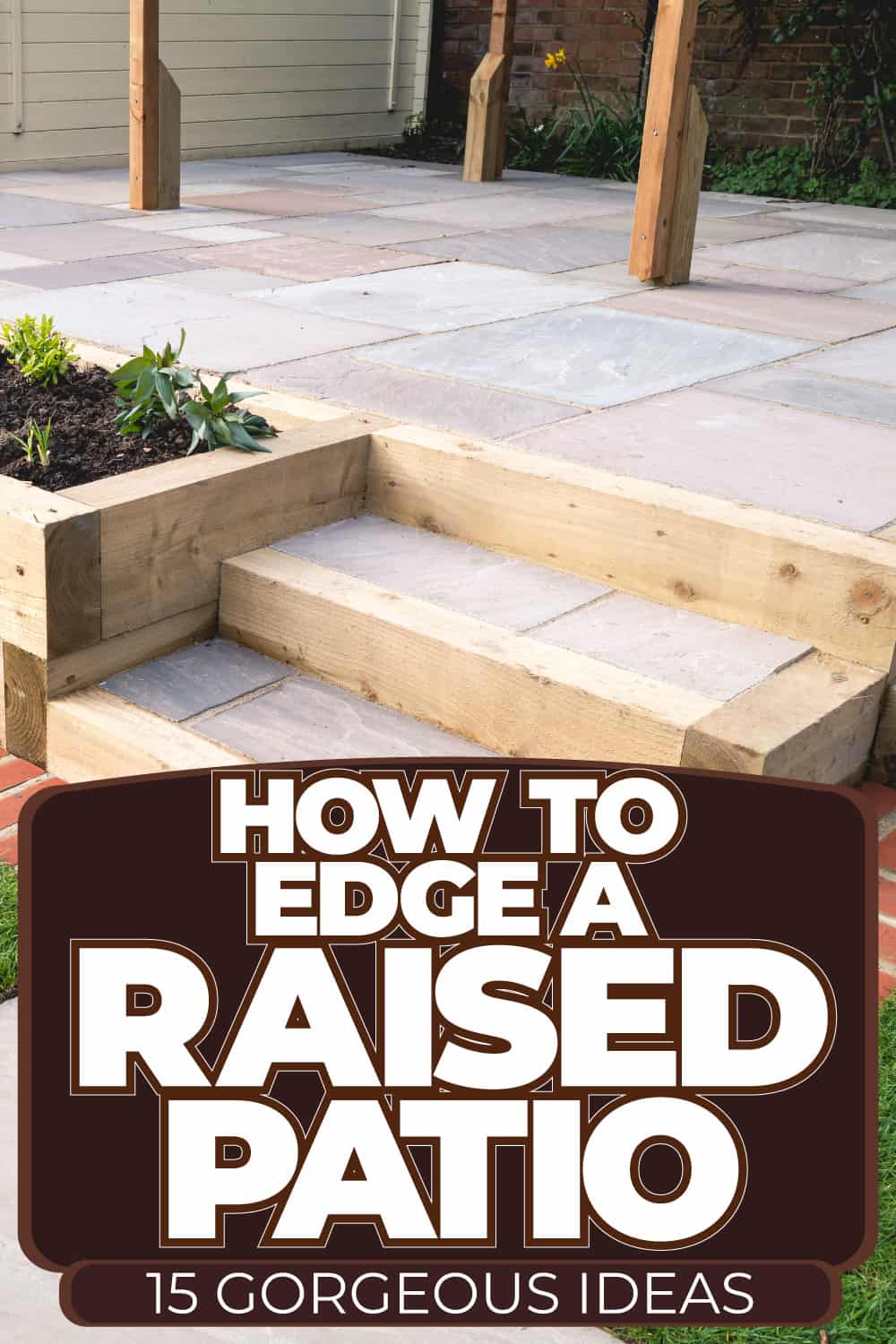
1. Shrubs Or Flowers
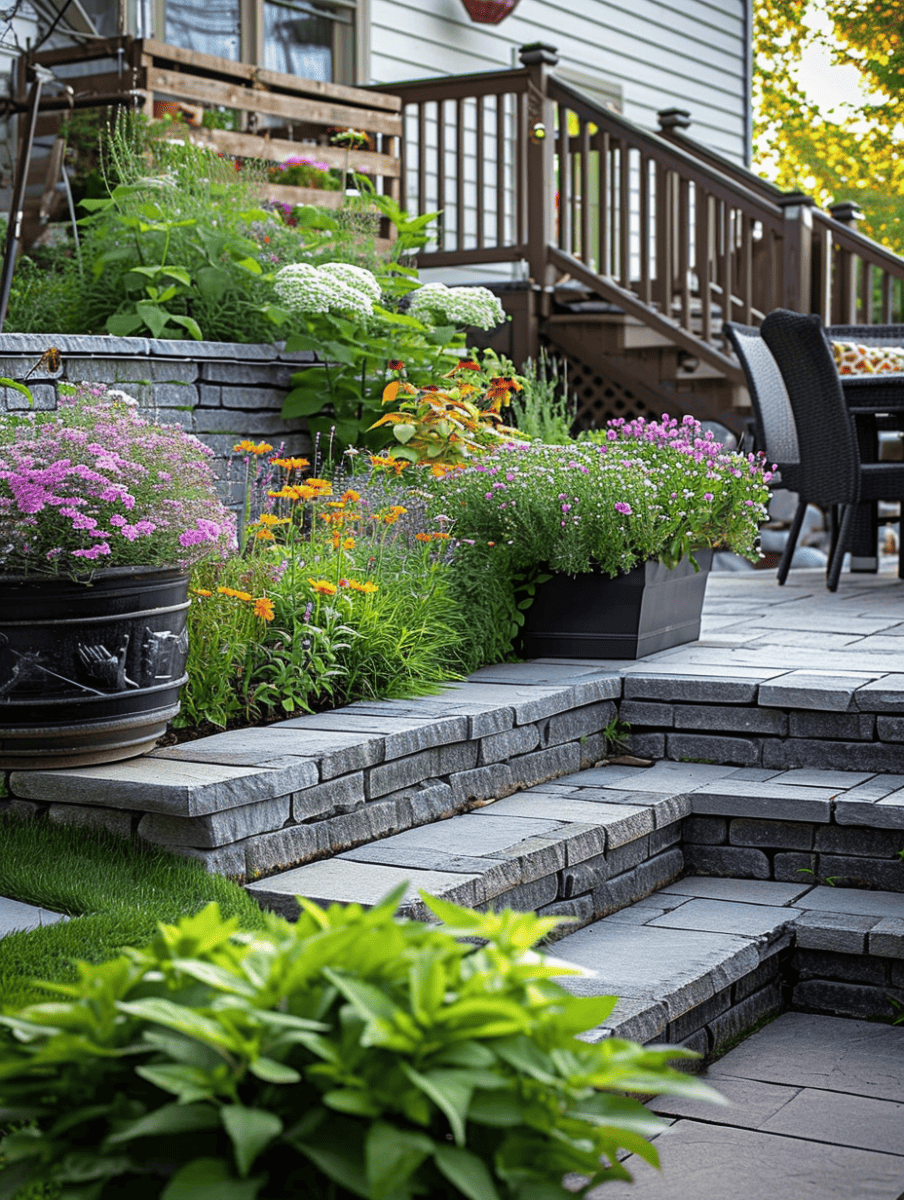
Shrubs are a great way to edge raised patios. You can plant alternating shrubs of different types that will give your patio a unique look. There are flowering plants that have a scent that you can match with the theme of your raised patio. Not only will you have a nice edge to your patio, but you will also get a fragrant smell when you relax on your patio.
Magnolias, roses, and summer lilacs have great scents that are great for your raised patio.
2. Planter Beds
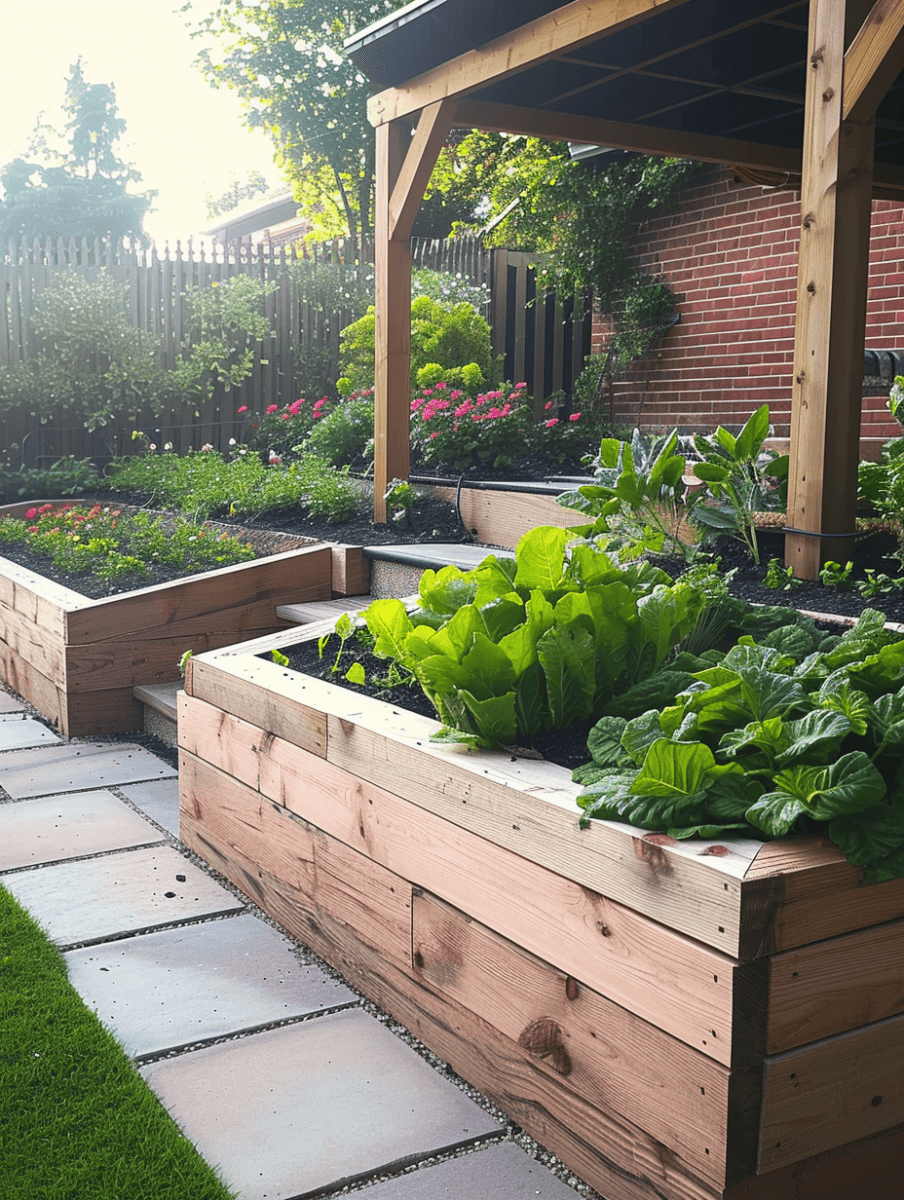
Installing planter beds around your raised patio will give you a contained area where you can have smaller plants or flowers. The beds will give your raised patio border, while the plants will give it a lively top instead of just plain stone or concrete.
This works great for patios that are installed in the middle of a garden. The planter beds will give your patio a subtle introduction as you move from the garden environment to your patio.You can even decorate the edges of the planter beds with some of the patio edges that are on this list.
3. Grass
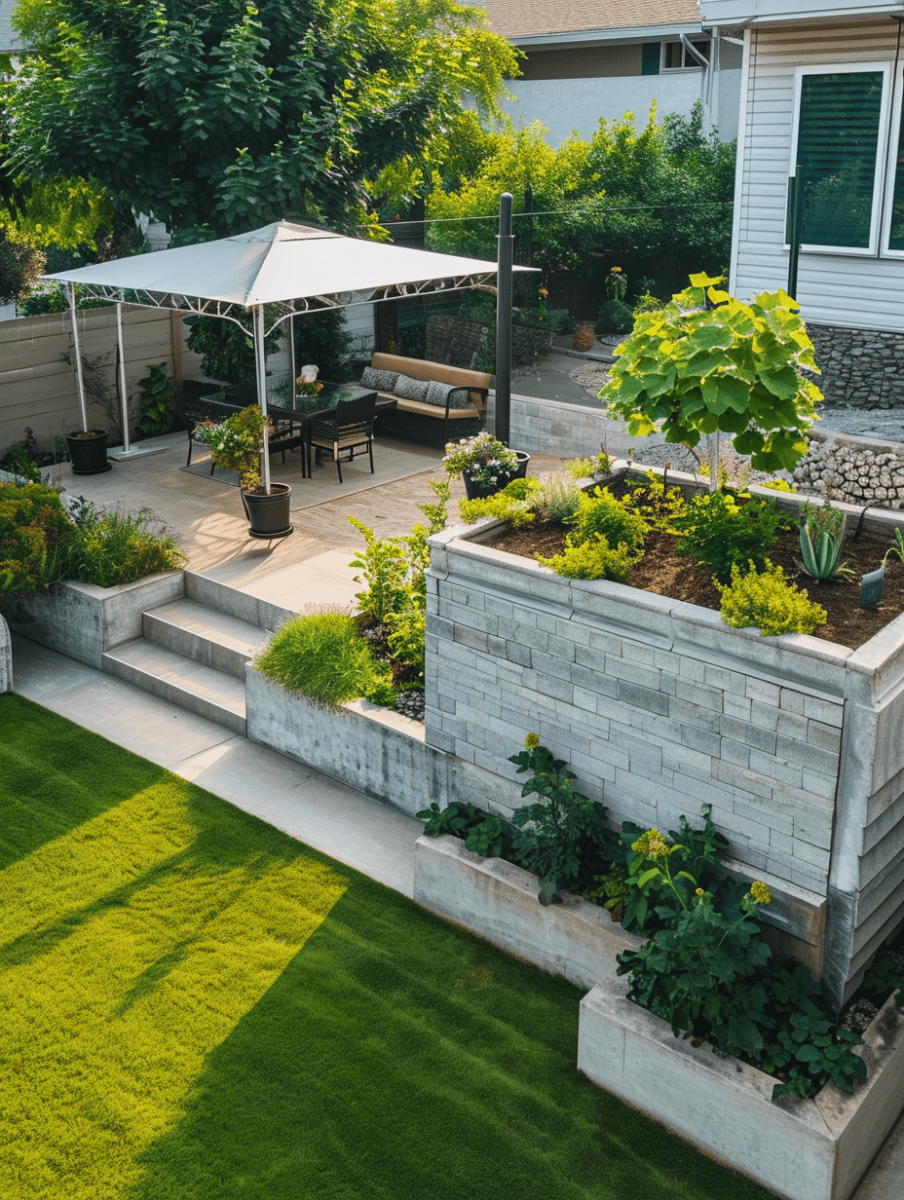
Grass edging for your raised patio looks great, especially if your raised patio is part of a larger patio. The grass edge creates a break from the continuous look of the patio and adds a refreshing green lining to accentuate your raised patio.
You can grow grass that follows a pattern and combine it with some of the other items on this list. You can pick any type of grass that is easy to maintain and doesn’t need a lot of water, so it will require very little maintenance on your part.
4. Mulch Or Bark Chips
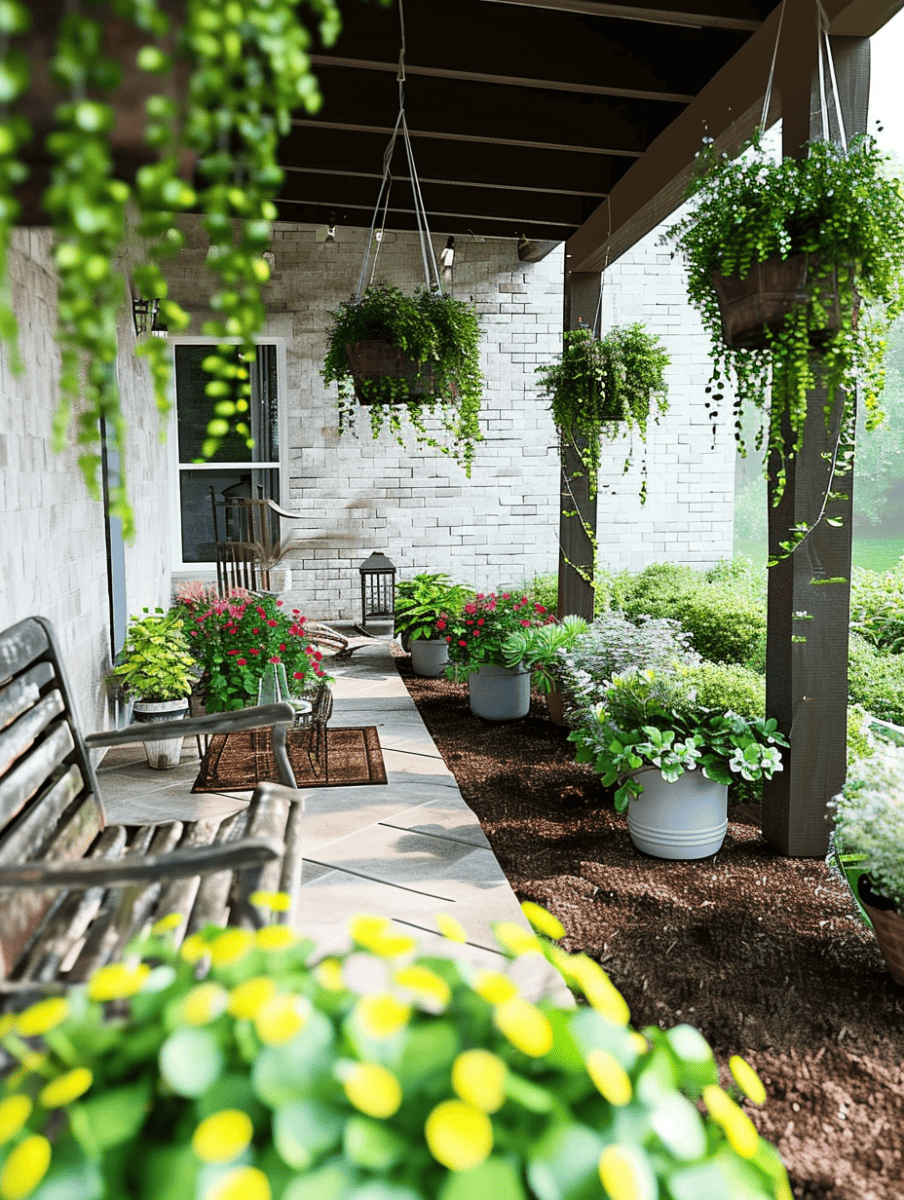
A layer of mulch is used to cover the topsoil and preserves moisture, keeping the soil cool. It is also effective in preventing the growth of weeds by preventing them from getting access to sunlight. Moreover, it prevents frost heaving in winter.
There are many types of materials that can be used as mulch. Bark chips can make your mulch look decorative while retaining its original purpose.
Using bark chip mulch as an edge to your patio gives it a natural woodland look. It works great for patios in the middle of a garden. The mulch will prevent weeds from growing around the patio.
Moreover, this edge works great for raised patios that are surrounded by low-cut grass. The bark chip mulch creates a break in the layer of grass.
5. Pea Gravel
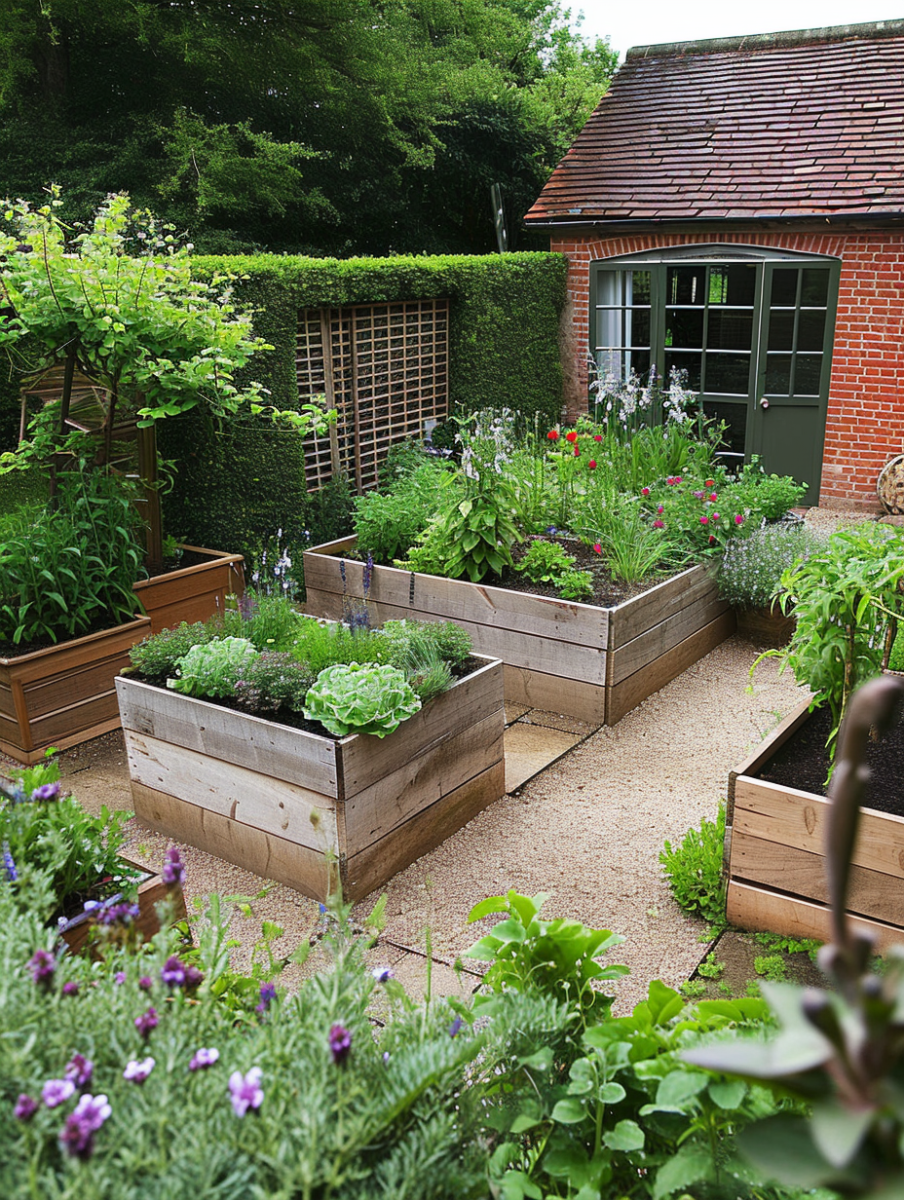
Pea gravel is often confused with crushed stone. However, pea gravel has a smooth and rounded edge while the crushed stone is coarse and often has a sharp edge. Additionally, crushed stone only comes in different shades of gray, while pea gravel has vibrant colors like shades of pink and blue. Pea gravel is also smaller than crushed stone.
Using pea gravel as an edge to your patio will give it a color contrast that will make it more attractive. Moreover, you can combine pea gravel with grass and planter beds to give those edges more color and make them more vibrant.
Pea gravel edges also work very well with patios that are made of dark-colored materials, serving as a contrasting highlight to the patio.
Royal Imports landscaping rocks are available on Amazon through this link.
6. Rocks
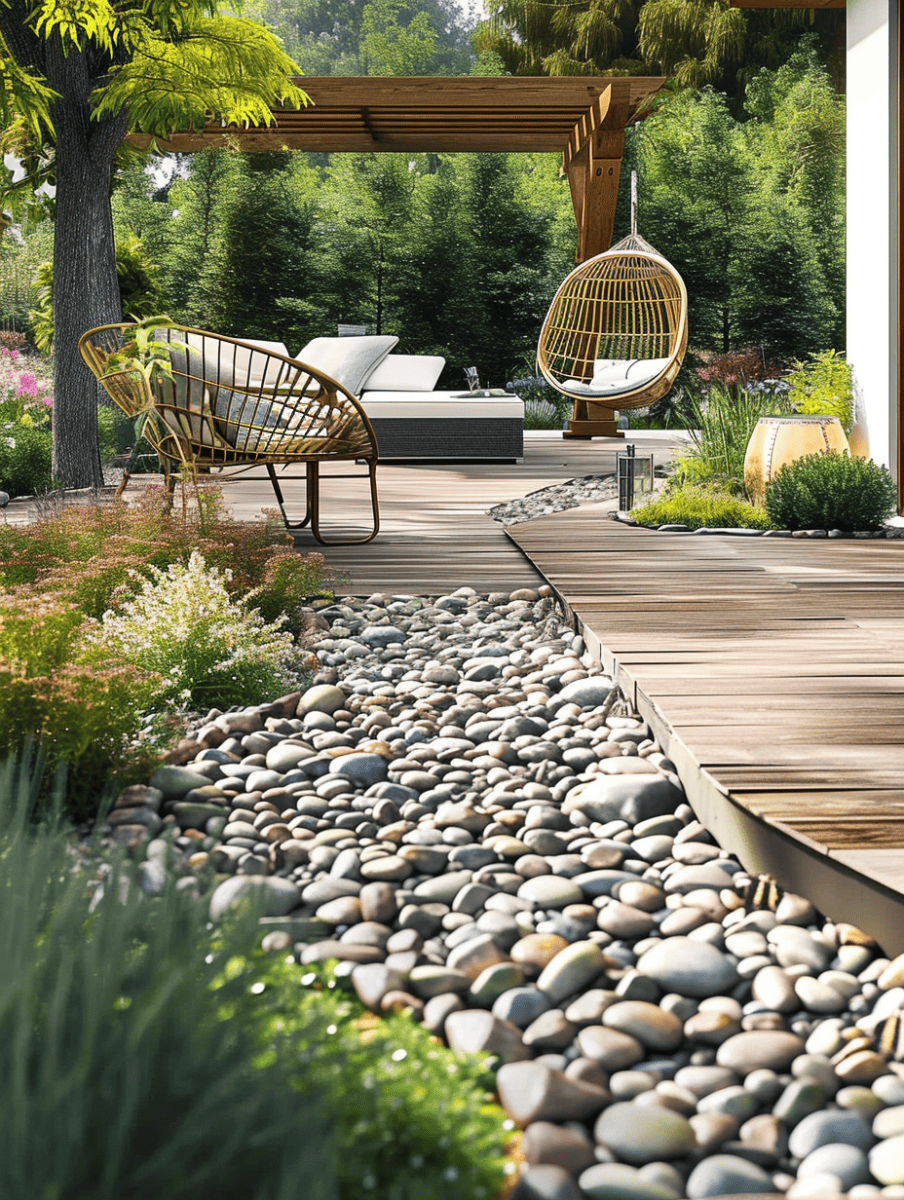
Using rocks as an edge to your patio is another great way to add color and pattern to an otherwise bare patio.
Using rocks as an edge for your patio gives you a lot of different design options to choose from. You can use smooth rocks or coarse rocks. You can arrange the rocks into patterns and shapes—combining rocks with the same color—around your patio.
And like the pea gravel, rock edges combine well with the other items on this list like the shrubs, flowers, planter beds, and grass.
7. Boulders
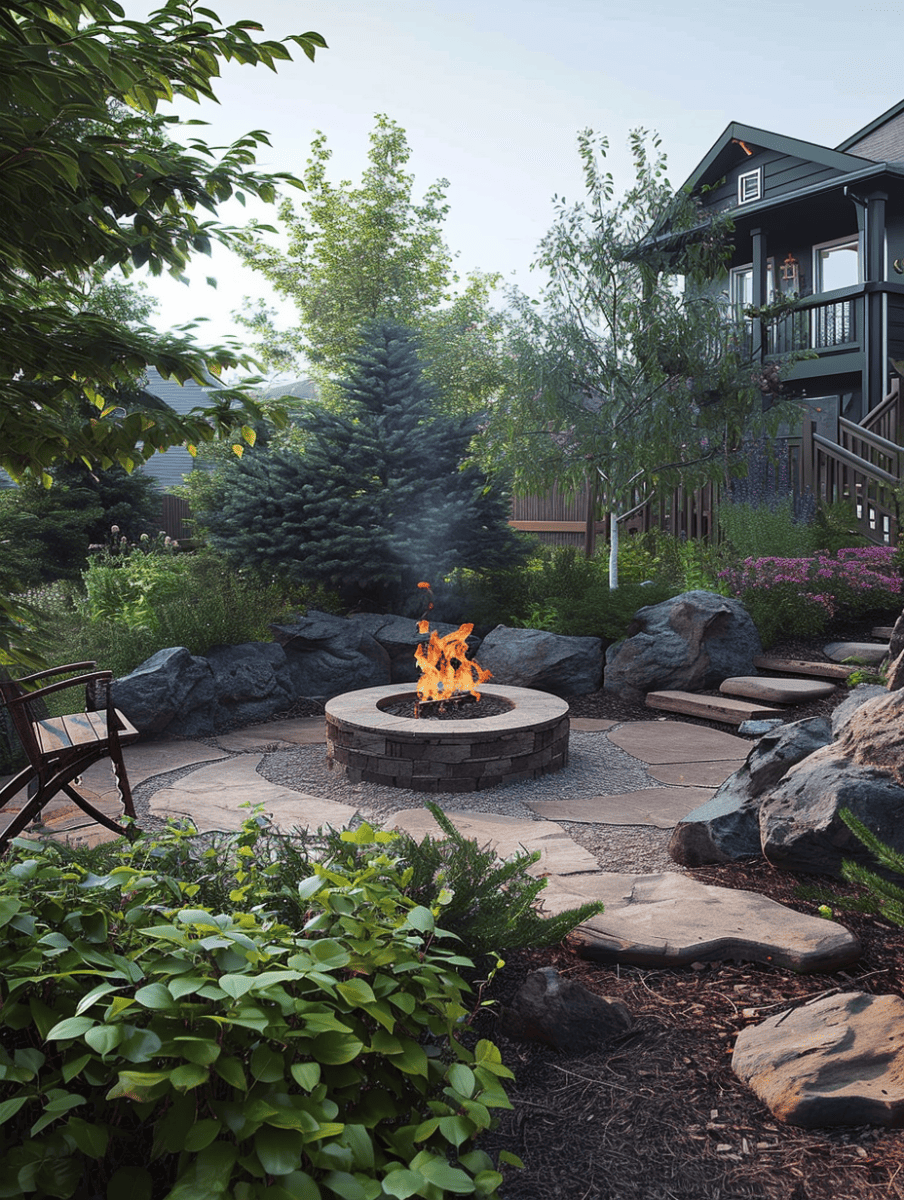
Take the rock edge design of your patio to the next level with boulders.
You can arrange standing boulders around your patio. Boulders that are a few inches higher than your patio works best. It will look like a miniature natural wall around your patio.
You can even combine the boulders with rocks or pea gravel. Moreover, planting flowers around the boulders will give them a dash of eye-catching color.
8. Wood
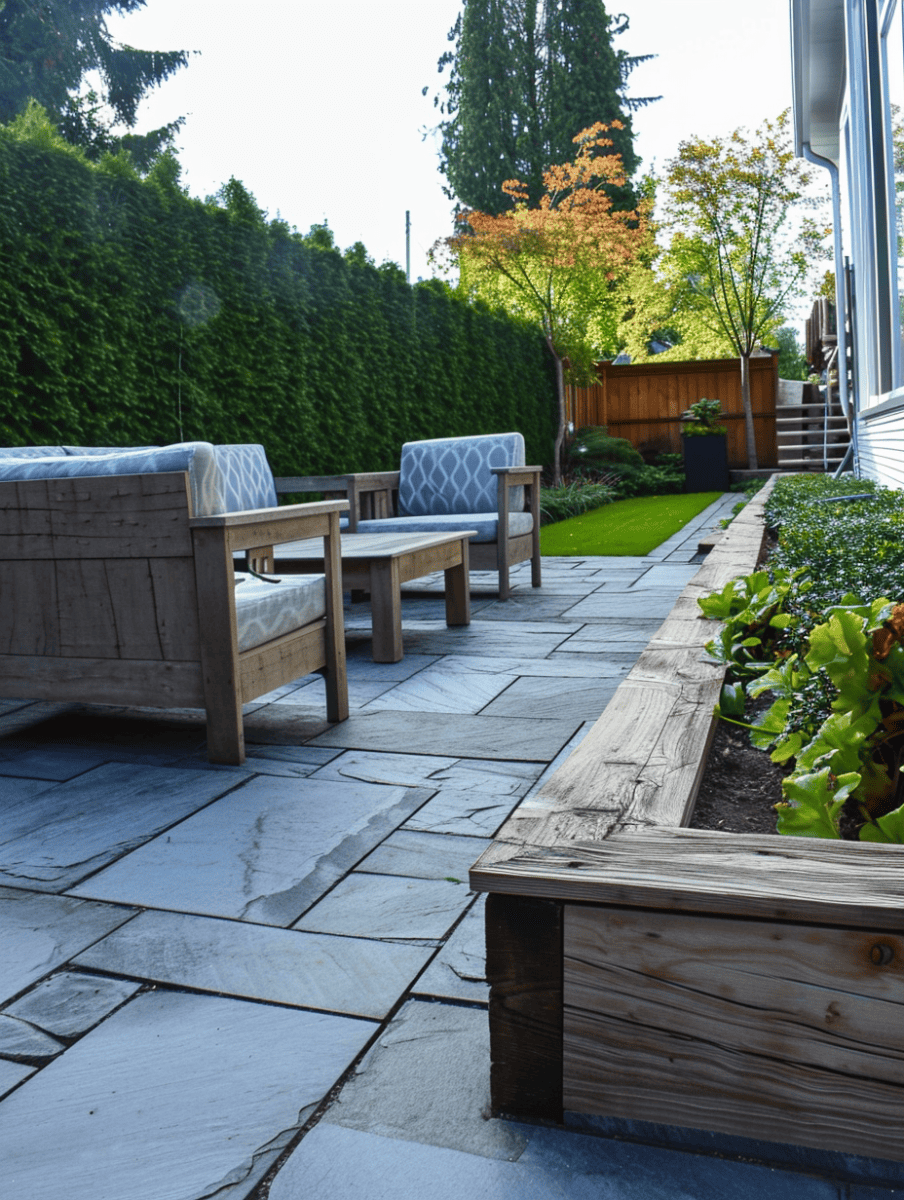
Using vertical wood slabs to edge your patio will give it a crisp look. You can use weather-resistant wood as an edge to your raised patio, picking a type of wood that will match the type of material that you used for your patio.
Wood edge is a great way to transition a wide-open patio into a raised patio area. It is also a great way to blend your patio with the surrounding garden.
9. Sleepers
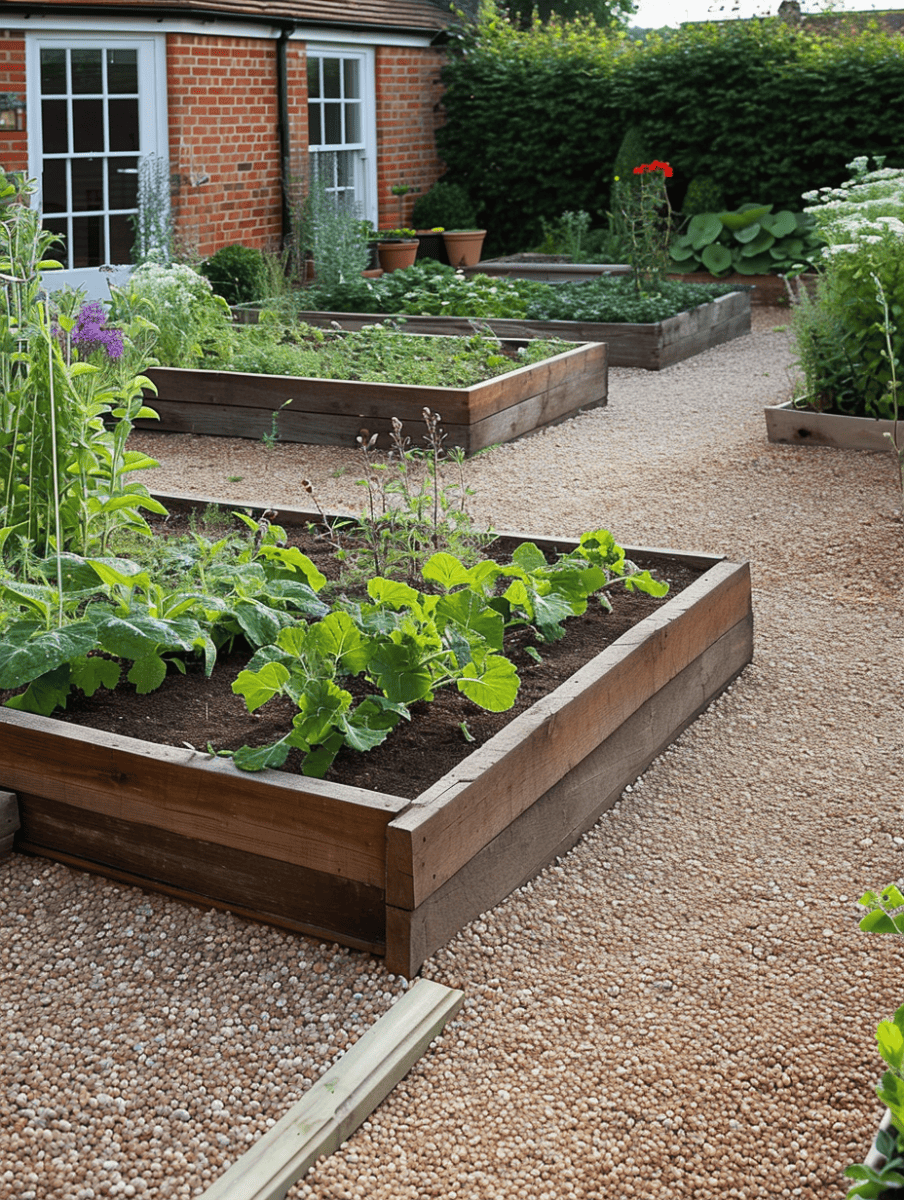
Sleepers are wooden beams that are traditionally used to create an even surface for the installation of railway tracks. Now, sleepers are used in landscaping to bring a natural look to a landscaping project.
Similar to a wooden edge, sleepers can be installed as an edge to a raised patio. It is best used on patios with an elevation that is not too high. If your patio has a high elevation, it is best to use wood slabs as edges.
10. Logs
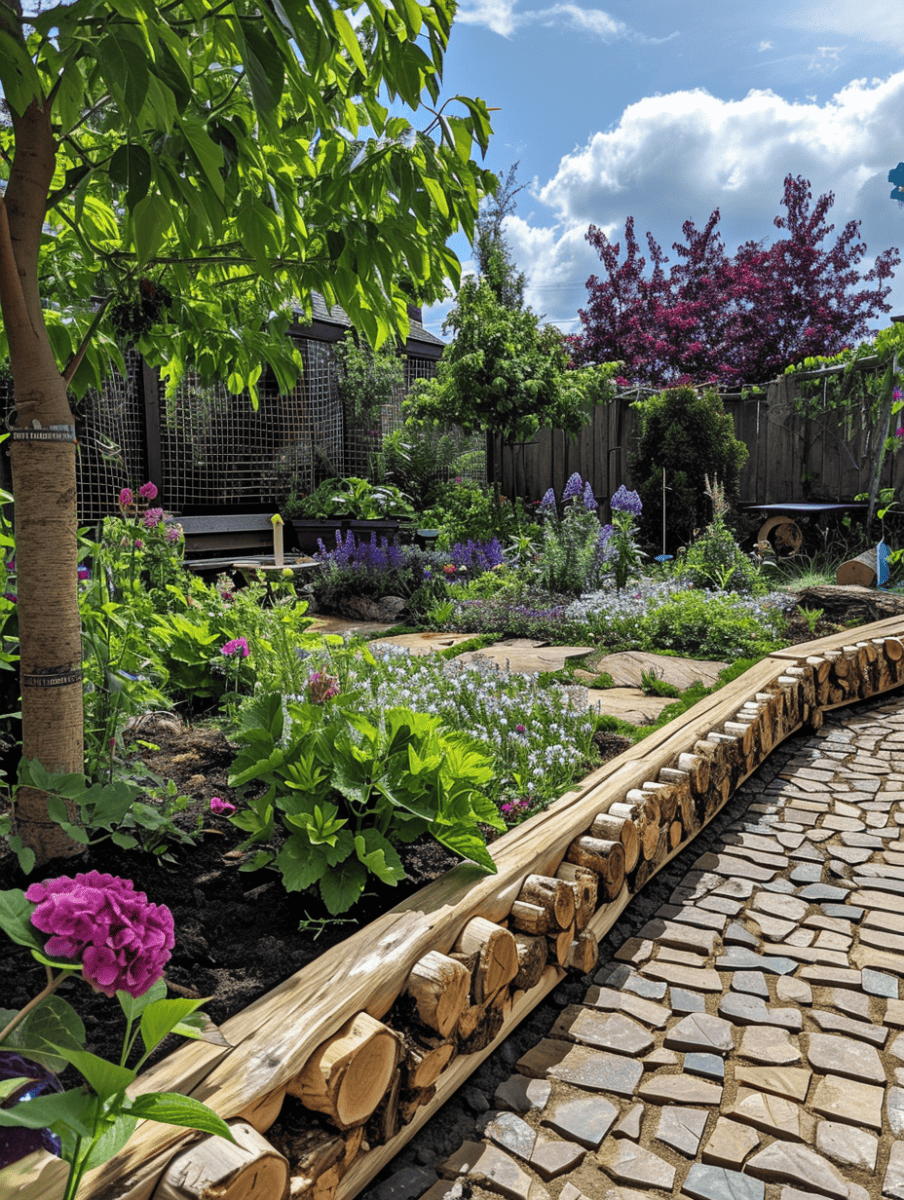
Installing logs as an edge to your patio takes with it all the design qualities of a sleeper edge but gives it a more natural look. You can use bare logs or even driftwood arranged around the edges of your patio.
Alternatively, you can cut your logs into flat disks and install them around the patio. Your patio needs to have a high elevation to have log disks installed around it.
You can use concrete to install the log disks. Alternatively, you can screw the logs in place. Install the screw slightly deeper into the log, then cover it with a wood filler.
Assorted round log discs are available on Amazon through this link.
11. Dwarf Wall
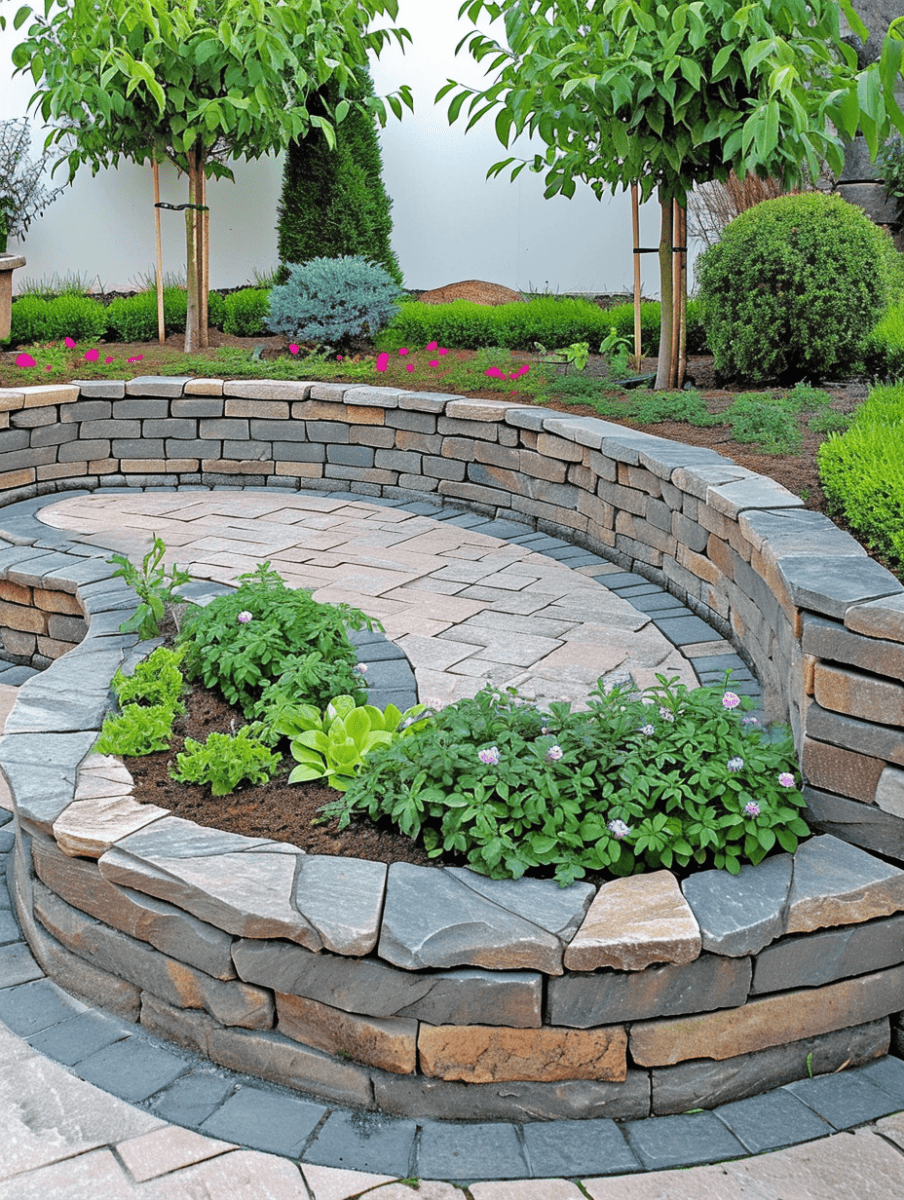
Installing a dwarf wall can serve as a border to your raised patio and as a seat. You can install dwarf walls on the entire perimeter of your patio with only a small opening that leads to a pathway out of your patio. Alternatively, you can install dwarf walls only on the edges of the patio, extending to a foot or a foot and a half from the edge.
Dwarf walls can be installed using the same material that you used on your patio, or you can use a different material that will blend well with the surface of your patio.
12. Landscape Edging
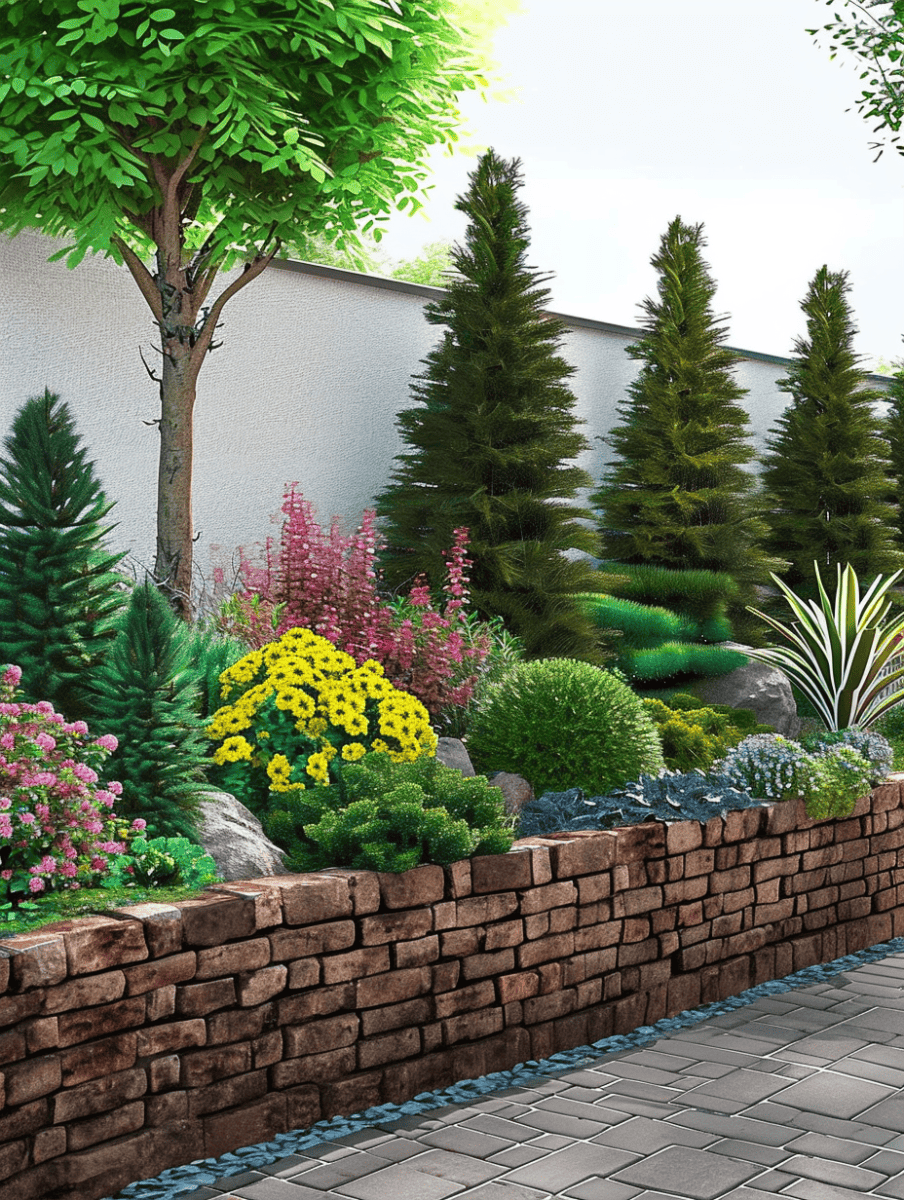
Why stop at one material when installing an edge for your raised patio? Why not combine several and have a fully landscaped perimeter?
This edge works well with patios that have a high elevation. The landscaping around your patio will allow it to blend with the surroundings of the patio or highlight it, making it the main feature.
13. Ground Cover Plants
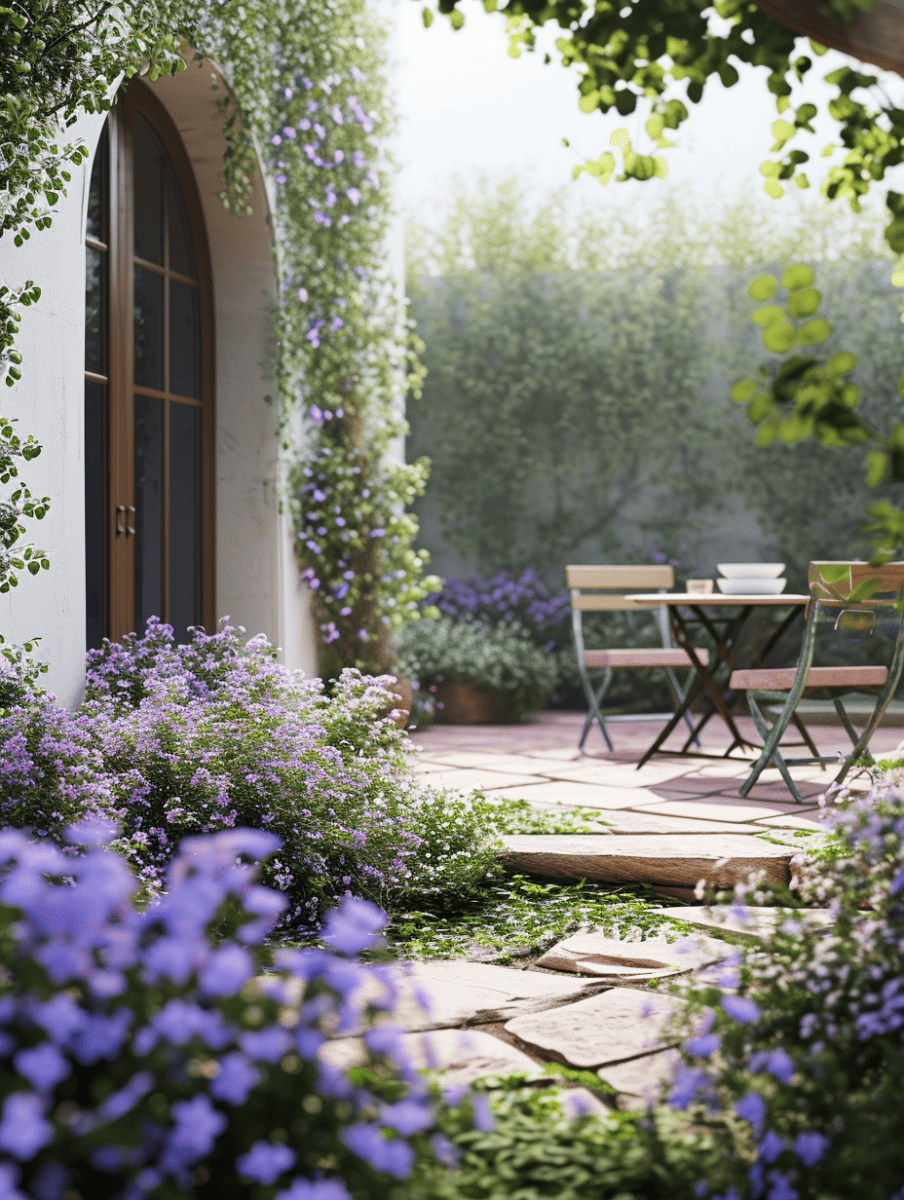
Ground cover plants are plants that naturally grow low. They form attractive mounds of colorful carpets as they cover bare soil. They are great at preventing the growth of unsightly weeds around your patio.
Ground cover plants work well with patios that you install in the middle of a garden or close to a garden. You can install them as a transition from a patio with a lower elevation that is made of a different material to your patio with a higher elevation.
You can combine it with stones or pea gravel, creating a border around your ground cover plants. Moreover, you can install a low planter bed where you can plant your ground cover plants.
14. Pond
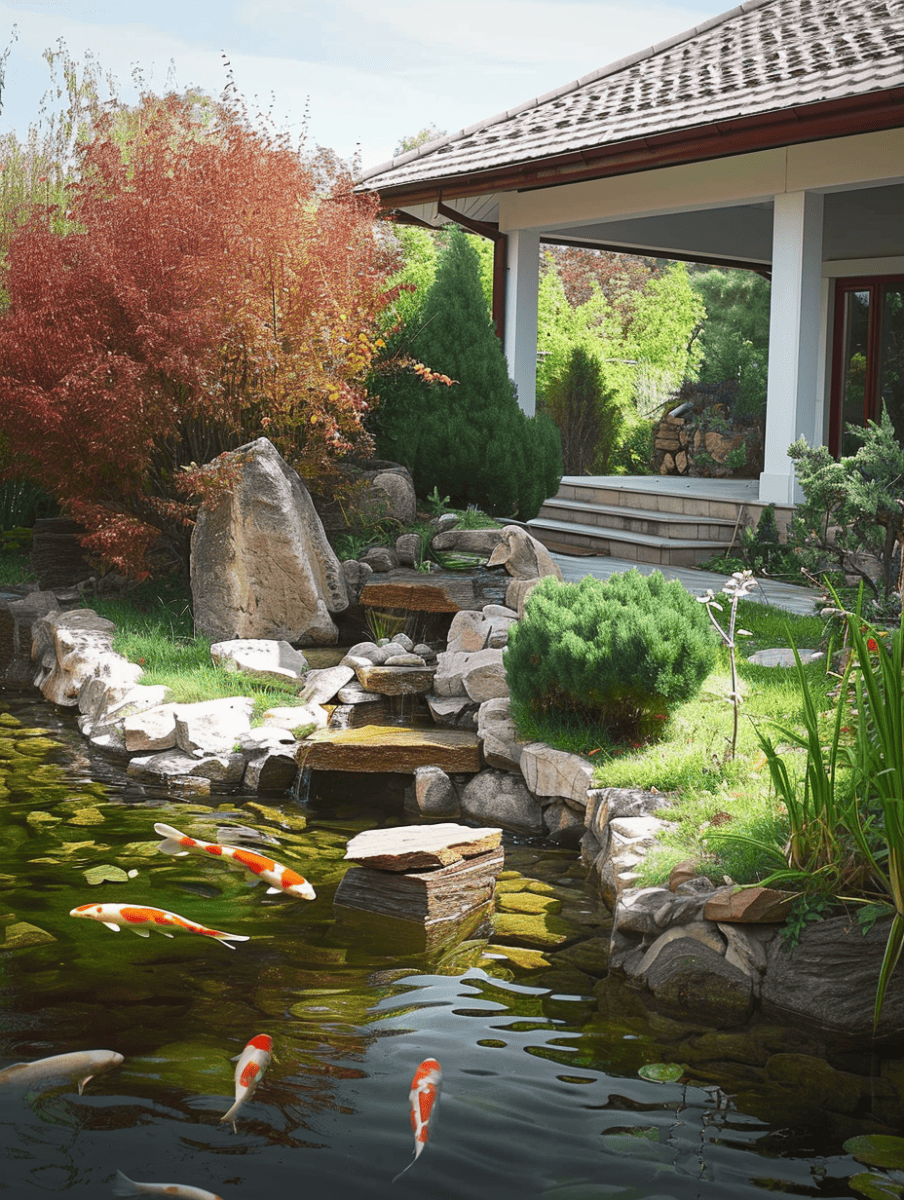
Surrounding your raised patio with water or a small pond will make it seem like it is floating. The water around the patio will give it a refreshing feel. Water can come from a small artificial waterfall from one end of your patio, or it can come from an artificial stream that flows over several boulders.
You can fill the small pool with colorful fish like koi, goldfish, or any tropical fish. There are many fish that you can choose from that thrive in outdoor ponds.
15. Pavers
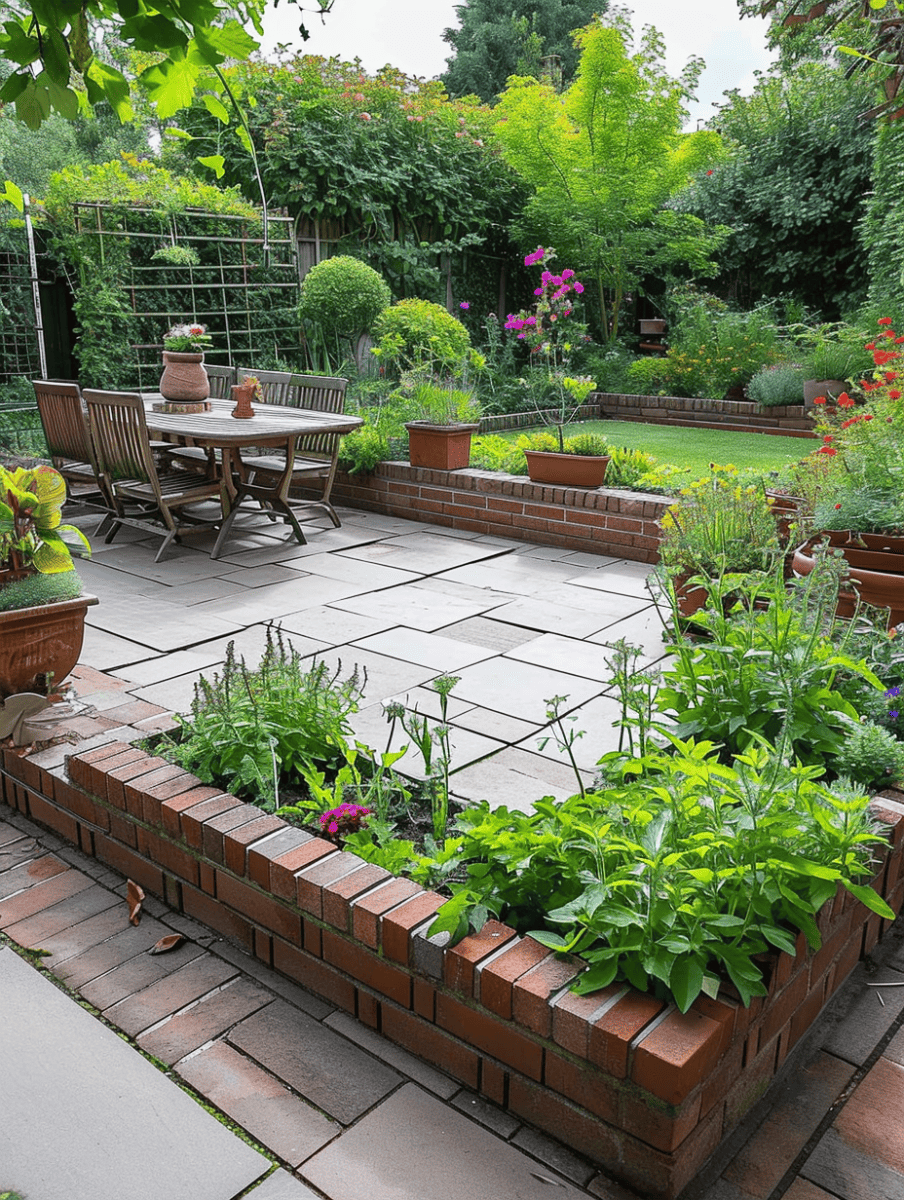
Another great way to edge your raised patio is by installing pavers of a contrasting color. You can install the pavers vertically around your patio. The contrast of colors will make your patio more visually attractive.
Moreover, pavers require very little maintenance. It can also be combined with most of the other items on this list to create a multilayer edge to your patio.
Conclusion
There are many different ways to edge a raised patio. You can mix most of these options or switch to a different one every few years to give your patio a fresh new look.
If you enjoyed reading this article, you might find the articles below equally enjoyable to read:
How Do You Protect a Terrace, Patio or Roof Garden From Rain?
Does Cedar Mulch Repel Bugs? How Effective Is It?
![New steps in a garden or back yard leading to a raised patio, alongside a new raised flowerbed made using wooden sleepers. A mowing strip of bricks is in front of newly laid turf. - How To Edge A Raised Patio [15 Gorgeous Ideas!]](https://gardentabs.com/wp-content/uploads/2022/07/NEW-ST1.png)


